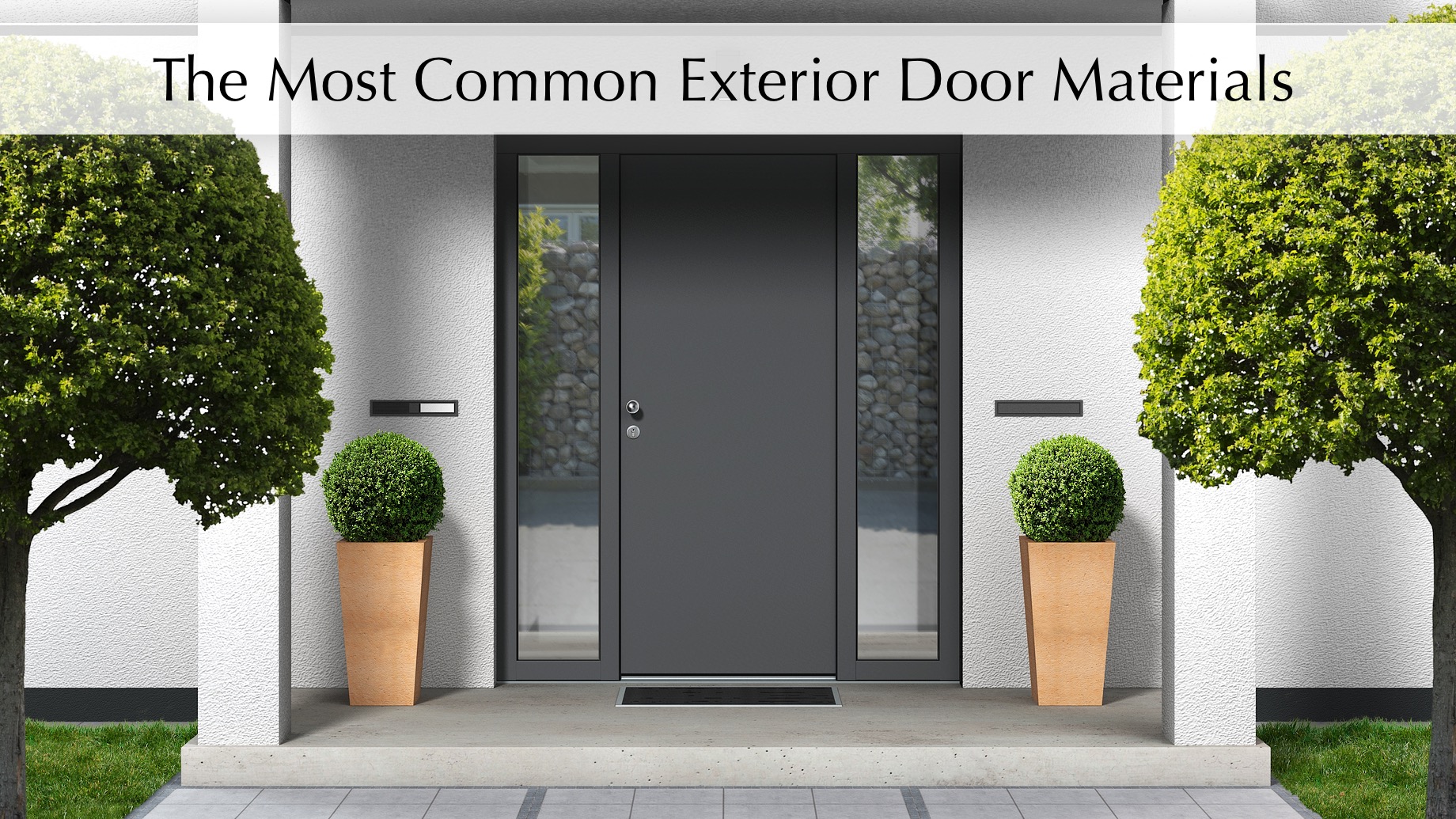
It can be tough choosing the right material for exterior doors. Whether you are replacing an old one that is past its best or looking for doors for a new build project, there is plenty to consider. The main choice will likely be that of the material you want your door to be made from.
There was a time when doors were made from one substance only – wood. Of course, various types of wood were used, which has been the traditional door material for many centuries. However, these days you have a choice of timber – or wood – or uPVC, plus aluminum (and sometimes steel) and a newer material known as composite.
In the article that follows, we will be looking closely at each material and the pros and cons of them, and we’ll also try and suggest the type of property each would be suitable for. Let’s begin with the timber door, the old favorite!
Timber Doors
We use timber for many items of furniture and household fittings. The sheer choice of different wood – and their various colors and patterns – makes timber a great choice if you want attractive exterior doors. However, some drawbacks come with using this natural product.
Wood doors do need regular maintenance. An external door will take the full force of the weather wherever you may be. It will need repainting or sealing every few years, and over time wood can rot, chip, and crack.
However, in its favor, wood can be colored however you want, can be treated to various seals, and comes in a wide range of different types. It is also easy to repair and, if well-maintained, will last a long time. You can check out exterior doors at Mikita Door & Window, who are expert door contractors in the field. Here’s a run-down of the pros and cons of timber doors:
Pros:
- Wide range of attractive woods to choose from.
- Nothing as elegant as a traditional wooden door.
- It can be painted or treated as you wish.
- Looks great on older and vintage homes.
Cons:
- Needs regular maintenance.
- Will need repainting often.
- It can begin to rot or crack.
- Not as secure as some others.
uPVC Doors
If you look at current building design trends, most new-build homes are fitted with uPVC doors and window frames. uPVC is ‘unplasticized polyvinyl chloride’ and is an extremely durable, tough, and light material popularly used for – among other things – external doors and window frames in more modern homes.
Perhaps not as attractive as timber – a uPVC door may look out of place on a period property – they nevertheless come with a range of advantages, including being strong, secure, and long-lasting. For a modern home or new-build, this type of door would be our choice.
They are usually supplied in white but can be manufactured in a range of colors. However, bear in mind that a uPVC door cannot be painted. The colored examples are more expensive to quite a degree. Let’s sum up the pros and cons of uPVC.
Pros:
- Cheap to manufacture.
- Last a lifetime.
- It can be made extremely secure.
- Requires zero maintenance.
Cons:
- Will look out of place on a period building.
- White is standard and other colors are more expensive.
- It can look cheap to some eyes.
- It cannot be painted.
Aluminum Doors
Aluminum doors – and steel doors – are not a common sight in domestic properties. However, if you are going for that trendy and ‘industrial’ look, this can answer your problems. Aluminum doors are tough, inexpensive, and secure, and in the right setting can look good.
However, the problem is that many suburban planning committees may look down on aluminum or metal doors as they do not suit the neighborhood. Industrial and commercial units make an ideal choice, but only certain domestic properties will be suitable for such material. Here’s a quick look at the pros and cons of aluminum or steel doors.
Pros:
- Very strong and tough.
- Low maintenance.
- Affordable.
- Trendy in the right setting.
Cons:
- Heavy steel doors.
- Not for traditional homes.
- Perhaps suitable for inner-city loft conversions within.
Composite Doors
The final type of commonplace door material is the composite door. These are so-called as the material used is a composite of wood, PVC, glass-reinforced plastic, and insulation materials. This sort of door offers excellent thermal qualities that are perhaps only matched by the uPVC example.
Resistant to the weather, whatever it may be, the composite door comes in a wide variety of colors and is hard-wearing to the extreme. Popular with homes on the US property market and considered by many builders as the best option, the composite door can be made extremely secure, will not warp as a wooden door will do, and will last a long time.
The major downside of the composite door is the cost. They are quite complex and involve insulation foam and specially designed frames; they are more expensive than the above options. The advantage is in energy efficiency and great looks as they are finished to resemble wooden doors and are difficult to tell from the real thing.
Pros:
- Super tough and secure.
- Come in a range of colors.
- Great insulation and energy efficiency.
- Look as good as a wooden door.
Cons:
- More expensive than the other options.
That’s our summary of the different types of door material, so which is for you?
Conclusion
If you are replacing a timber door because it has rotted or warped, be aware the new one may do the same. Your alternative is the composite door which offers all the advantages listed above. Owners of modern homes may also consider the uPVC door as a cheaper option than the composite door.